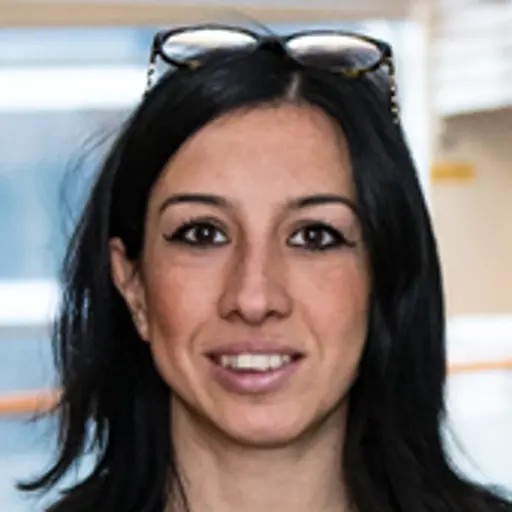Course syllabus adopted 2022-02-02 by Head of Programme (or corresponding).
Overview
- Swedish nameKvantdatorer och kvantberäkningar
- CodeMCC155
- Credits7.5 Credits
- OwnerMPNAT
- Education cycleSecond-cycle
- Main field of studyMathematics, Engineering Physics
- DepartmentMICROTECHNOLOGY AND NANOSCIENCE
- GradingTH - Pass with distinction (5), Pass with credit (4), Pass (3), Fail
Course round 1
- Teaching language English
- Application code 18119
- Maximum participants100
- Block schedule
- Open for exchange studentsYes
Credit distribution
Module | Sp1 | Sp2 | Sp3 | Sp4 | Summer | Not Sp | Examination dates |
|---|---|---|---|---|---|---|---|
| 0120 Written and oral assignments 2 c Grading: UG | 2 c | ||||||
| 0220 Examination 5.5 c Grading: TH | 5.5 c |
|
In programmes
- MPCSN - COMPUTER SYSTEMS AND NETWORKS, MSC PROGR, Year 1 (elective)
- MPCSN - COMPUTER SYSTEMS AND NETWORKS, MSC PROGR, Year 2 (elective)
- MPHPC - HIGH-PERFORMANCE COMPUTER SYSTEMS, MSC PROGR, Year 1 (elective)
- MPHPC - HIGH-PERFORMANCE COMPUTER SYSTEMS, MSC PROGR, Year 2 (elective)
- MPNAT - NANOTECHNOLOGY, MSC PROGR, Year 1 (elective)
- MPNAT - NANOTECHNOLOGY, MSC PROGR, Year 2 (elective)
- MPPHS - PHYSICS, MSC PROGR, Year 1 (compulsory elective)
- MPPHS - PHYSICS, MSC PROGR, Year 2 (elective)
Examiner
 Giulia Ferrini
Giulia Ferrini- Head of Unit, Microtechnology and Nanoscience
Eligibility
General entry requirements for Master's level (second cycle)Applicants enrolled in a programme at Chalmers where the course is included in the study programme are exempted from fulfilling the requirements above.
Specific entry requirements
English 6 (or by other approved means with the equivalent proficiency level)Applicants enrolled in a programme at Chalmers where the course is included in the study programme are exempted from fulfilling the requirements above.
Course specific prerequisites
It is recommended that the students have taken either FKA173 - "Quantum optics and quantum information", TIF290 - "Quantum mechanics", or some other equivalent course.Aim
The aim of this overview course is to familiarise the students with both important quantum algorithms (such as Quantum Fourier transform, Phase estimation, and Shor's algorithm), variational quantum algorithms that utilise an interplay between classical and quantum computers (such as the Variational Quantum Eigensolver (VQE), and the Quantum Approximate Optimisation algorithms (QAOA), among others), and the intersection of quantum computing and machine learning. The course will also give the students practical experince of programming a quantum computer. Quantum computers are rapidly improving, and recently quantum computational primacy was achieved, i.e., a quantum computer was able to perform a computational task much faster than a classical computer. Quantum computing is expected to have applications in many areas of society. The course prepares the students for applying quantum computation to a variety of important problems.Learning outcomes (after completion of the course the student should be able to)
- List modern relevant quantum algorithms and their purposes.
- Explain the key principles of the various models of quantum computation (circuit, measurement-based, adiabatic model).
- Explain the basic structure of the quantum algorithms addressed in the course that are based on the circuit model, and to compute the outcome of basic quantum circuits.
- Compare, in terms of time complexity, what quantum advantage is expected from the quantum algorithms addressed in the course with respect to their classical counterparts.
- Program simple quantum algorithms on a cloud quantum computer or a cloud simulator.
- Understand the basic principles of the continuous variable encoding for quantum information processing.
- Give examples of the motivation for applying quantum computing to machine learning and of what the obstacles are to achieving an advantage from doing so.
Content
- Elementary quantum gates and basic quantum computing formalism
- Introduction to complexity classes and relevant conjectures
- Circuit model for quantum computation
- Foundational theorems for quantum computation: Solovey Kitaev theorem; Gottesman-Knill theorem.
- Other models for universal quantum computation beyond the circuit model: Measurement Based Quantum Computation and Adiabatic quantum computation
- Quantum Fourier Transform and Phase estimation algorithms
- Shors algorithm
- Quantum Machine Learning
- Quantum Cloud Computing exercise
- Quantum algorithms for solving combinatorial optimization problems: quantum annealing and QAOA
- Variational quantum eigensolver
- Sampling models: Boson sampling and Instantaneous Quantum Polynomial
- Continuous-Variable (CV) quantum computation, measurement-based quantum computation in CV and GKP encoding
Organisation
The course comprises lectures, tutorial exercise sessions, and a programming laboratory exercise.Literature
- Nielsen and Chuang, Quantum Information and Quantum Computation
- Course notes
Examination including compulsory elements
The assessment comprises two hand-ins and a a final written exam. The credits distribution is as follows: each of the hand-ins counts for about 15% towards the total grade, resulting in 2 hp; the written exam counts for about 70% towards the final grade, namely 5.5 hp. The total points determine the grade (F, 3, 4, 5).The course examiner may assess individual students in other ways than what is stated above if there are special reasons for doing so, for example if a student has a decision from Chalmers about disability study support.